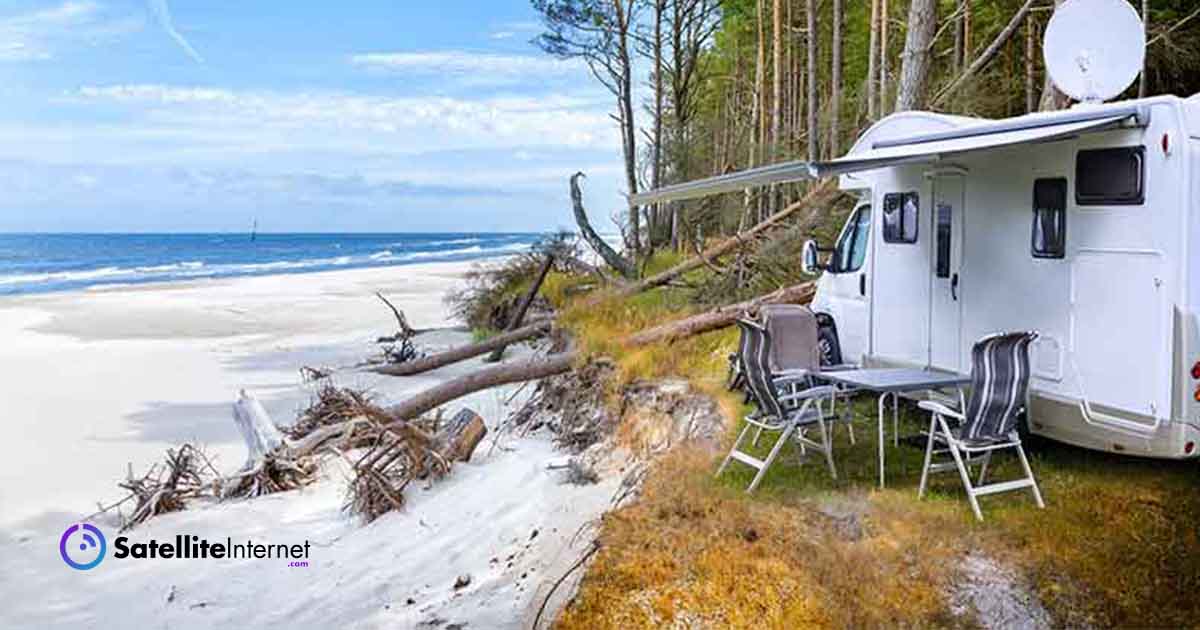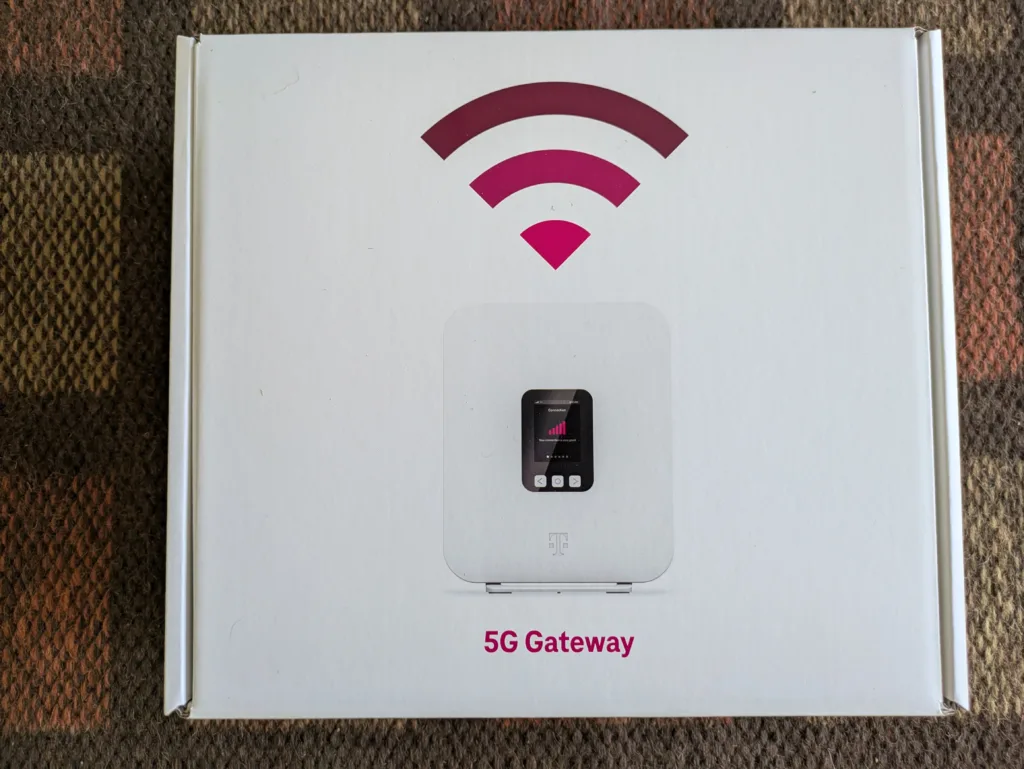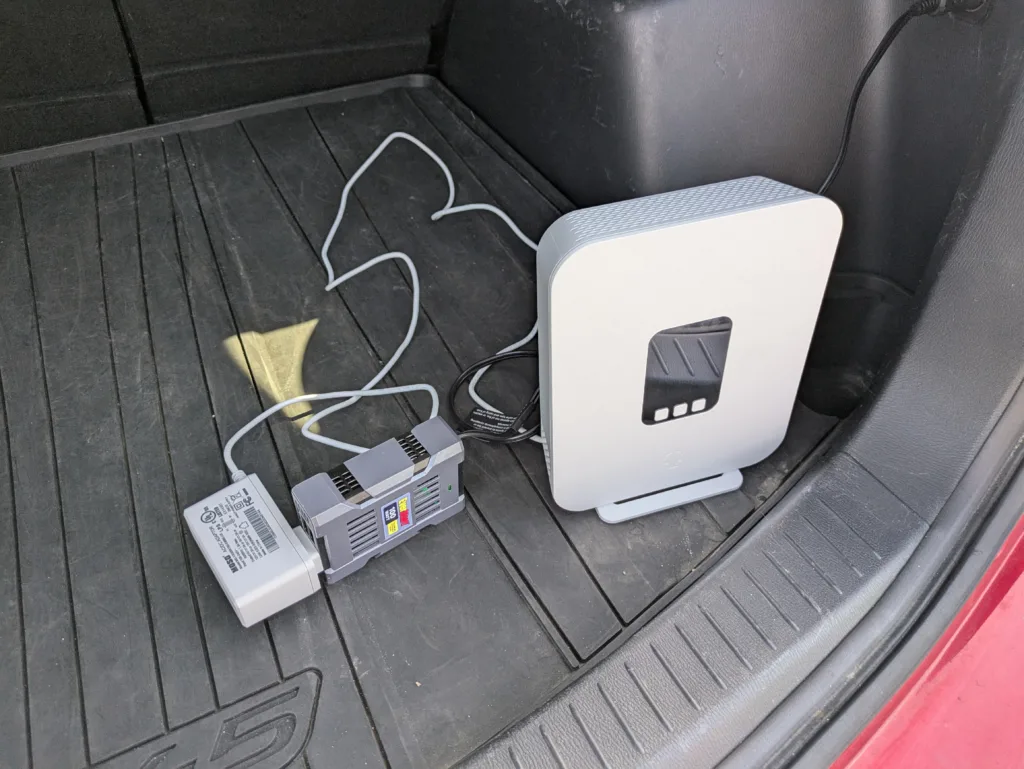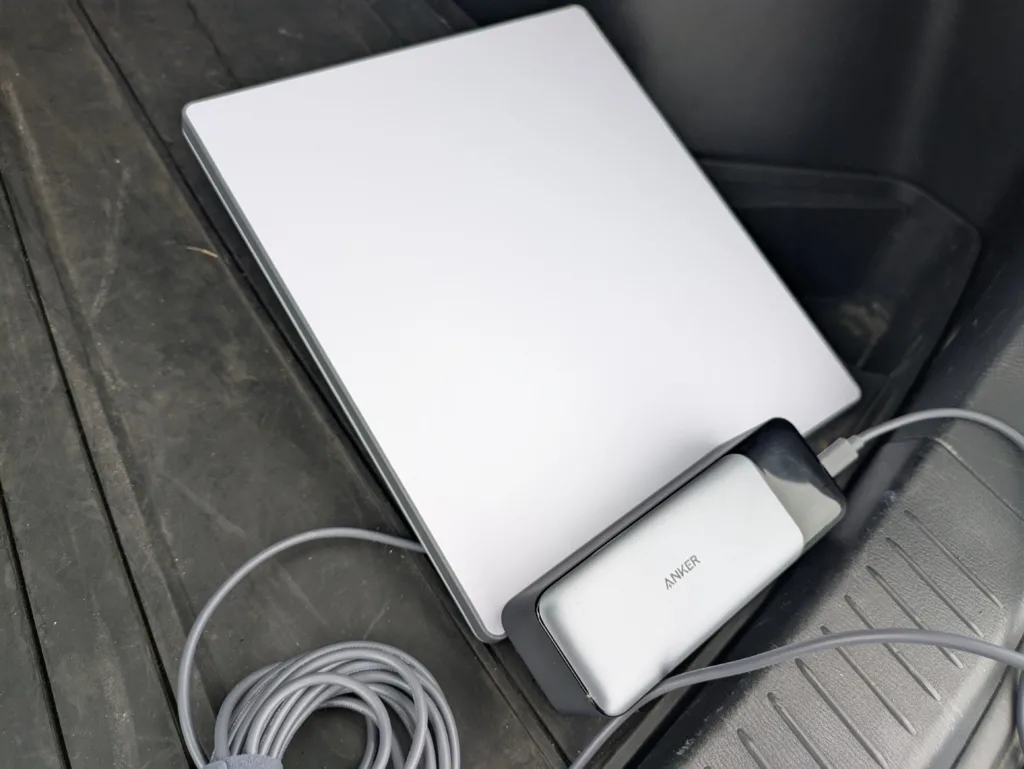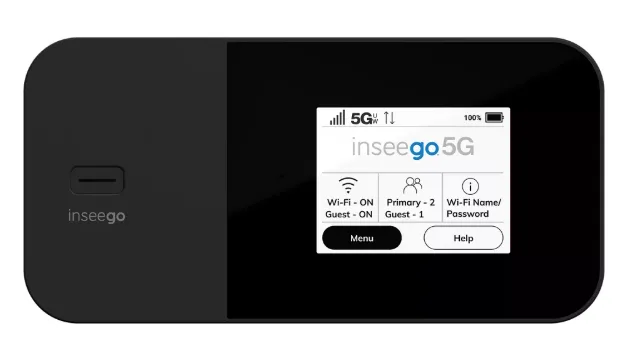Verizon offers the most variety and value with its hotspot plans compared to other major carriers. It offers more data for lower prices, but only if you’re already a Verizon mobile customer. Its plans can be used with any modern hotspot device, although Verizon also sells its recommended devices on payment plans added to your monthly plan.
The device I recommend to go along with a Verizon hotspot plan is the Inseego MiFi X PRO. It’s an affordable hotspot device on a payment plan of $9.72 per month. It’s no bigger than a smartphone and has its own rechargeable battery that lasts up to 13 hours unplugged. It has Wi-Fi 6, which has extended reach and can connect to up to 32 devices.
Nearly every modern smartphone comes with a tethering feature that allows it to function as a hotspot. So why use a device and a separate plan? Phone hotspot data is often very limited, and going over your plan’s cap can result in hefty overage charges. A phone’s Wi-Fi reach is very limited and can only connect a few devices at a time. Plus, frequently using your phone rapidly drains its battery and shortens its lifespan.
Using your phone’s tethering to connect your laptop for a short time once in a while is fine, but for frequent travel, especially with multiple users, a dedicated device is much more efficient. It provides better Wi-Fi for better signal and more devices. Plans for hotspots are more flexible since they’re prepaid and easily cancellable.
Speed - 3.5
According to Verizon’s broadband facts label, its hotspot service on 5G has speeds of 35–143Mbps. All of its plans, with the exception of the Essential tier, can also access its 5G Ultra Wideband service, which is located in a handful of major cities but can provide speeds up to 634Mbps. When traveling cross country, you’ll likely only be on standard 5G, and when really off the beaten path, you’ll likely use 4G LTE, which provides speeds up to 75Mbps.
Reliability - 3.0
Like all devices and services that are powered by 5G, your hotspot’s reliability and signal will entirely depend on your proximity to Verizon’s cellular towers. Luckily, Verizon’s network covers a majority of the U.S., though it’s mostly 4G LTE. Verizon doesn’t have an unlimited data option for its hotspot plans, but the tiers of data are plenty for RV travelers on a long weekend road trip. The amount of data will likely depend on your typical usage and how many passengers you have.
Portability - 4.8
Most modern hotspots are small enough to fit in your pocket, and the Inseego MiFi X PRO is no exception. It’s lightweight, no bigger than a smartphone, and has a battery life of up to 13 hours. If you’re traveling in an RV, then keeping it charged should be no problem. The strong Wi-Fi 6 of the Inseego will ensure that your RV and the surrounding campground will be covered.
Value - 3.3
Verizon Hotspots are for travelers who need a decent internet connection but don’t need or want to pay for an expensive high-speed internet solution like Starlink Roam or T-Mobile. However, to take advantage of its best prices, you’ll need to already be a Verizon customer. Its plan prices are incredibly affordable, but you need to take into account the added cost of the hotspot device. Whether you get one from Verizon or another source, any adequate device can be quite expensive. Ones with decent battery life and Wi-Fi typically cost $200 to $300, which is why I recommend going with one you can buy through a payment plan like Verizon’s.
T-Mobile has the most comprehensive 5G coverage of any cellular network hotspot plan. Their base plan is also very affordable, at only $10 per month for 2GB of data, and its bigger data tiers are also priced competitively. Because of its availability, we recommend T-Mobile for RV life since you’ll likely get the best coverage anywhere in the country.
AT&T has the second-best coverage in the U.S. Its prepaid, data-only plans are a one-time purchase and an excellent option to avoid overpaying for data you won’t use. However, its highest-tiered plans with the most data are among the most expensive.
Verizon has the least coverage but has the most affordable plans, with its Essential plan starting at $10 per month for 15GB. However, the catch is that you must be a Verizon mobile customer to qualify for the low prices; otherwise, the hotspot plans on their own are much more expensive.
